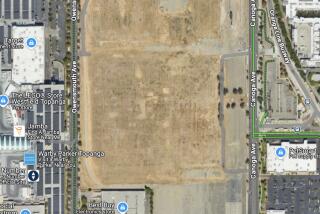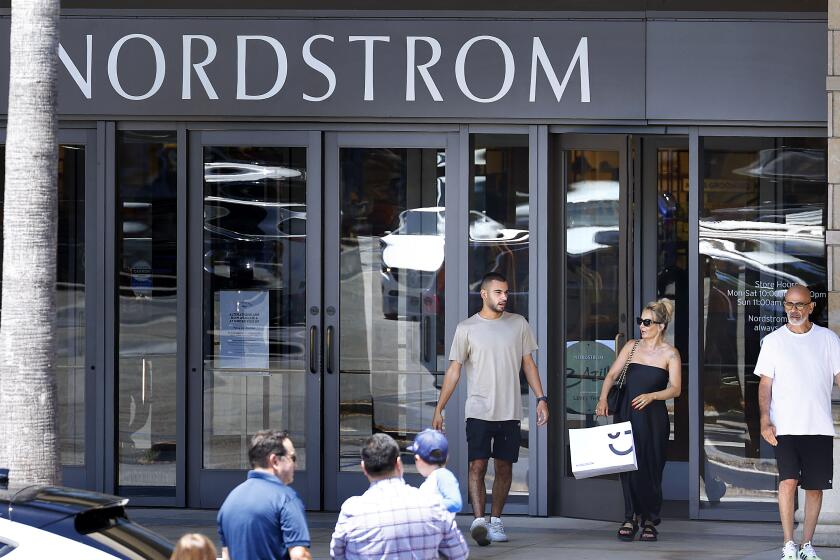Rocketdyne Official Says Blast Remains a Mystery : Investigation: Firm president contends that two chemicals tested are not known to combust without being ignited.
- Share via
CANOGA PARK — Although they have pieced together the events leading up to an explosion that killed two scientists and severely burned a third this week, officials at Rockwell International’s Rocketdyne division on Friday said the cause of the blast remains a mystery.
“We had two experts conducting these tests,” Rocketdyne President Paul B. Smith said. “That raises a lot of questions. This should never have happened, so we must ask ourselves what went wrong.”
Smith said the two chemicals being tested Tuesday at Rockwell’s Simi Hills test site are well-known rocket propellants that have never before been known to combust without being ignited.
Before the 9:07 a.m. blast, he said, five workers were preparing for the third of five identical experiments testing the shock waves emitted when the chemical mixture burns.
The two earlier trials had gone according to plan: The two chemicals had been placed in the bottom of a shallow aluminum pan coated with sawdust. As a security precaution, four researchers withdrew to a secured building while one brought in an ignition device and placed it in the aluminum pan. He then retreated to the secured building.
A detonator in the secured building was then unlocked and the ignition device set off. What followed in those first two trials was a rapid burn, the chemicals consumed in a matter of seconds, their shock waves recorded by computer.
But during the third run-through, the chemicals exploded without warning.
They mysteriously ignited before the researchers had retreated to the “blockhouse” and even before the ignition device had been brought out. Killed were 51-year-old physicist Larry A. Pugh and 53-year-old engineer Otto K. Heiney.
A third worker, Lee Wells, remained in stable condition Friday at Sherman Oaks Hospital Burn Center. Two unidentified workers escaped the explosion without injury.
Smith said tests are continuing to determine the exact contents of the shallow pan. But he added that there is a “high likelihood” that the pan held only the two chemicals meant to be tested.
The blast at the Santa Susana Field Laboratory, in a canyon-like area well shielded on both sides by hills, also ignited a brush fire in the chaparral surrounding the plant, burning 15 acres but causing no injuries.
Smith said the tests were meant to establish a control for future experiments. The shock waves from burning these two chemicals, already well known to scientists, could later be compared with those of new, unknown combinations.
Two similar tests the previous Friday had gone without a hitch, as had the first two tests Tuesday morning.
Smith and Mike McHale, Rocketdyne’s vice president of directed energy and imaging, described the scene before and after the blast.
Heiney, a Canoga Park engineer, had been with the company for 10 years and was an expert in solid propellant research. He was responsible for the aluminum pan and its contents, the 10 pounds of the thick liquid, glycidal azide polymer, or GAP; and nitrocellulose, a fibrous white solid, Smith said.
At the time of the explosion, Heiney was about two feet from the metal pan and probably making his way with the rest of the workers toward the blockhouse, Smith said. He was killed instantly.
Pugh, of Thousand Oaks, had a 17-year tenure at Rocketdyne. He was in charge of the recording instruments, which transmitted data during the burn via wires to the blockhouse. At the time of the blast, he was about six feet from the pan, near his instruments. He also died instantly.
Wells, 62, of Newbury Park, was on hand to assist the other scientists. Farther away from the pan than Pugh and Heiney, Wells was blown against the hills behind the test site and suffered second- and third-degree burns over 20% of his body.
The two other workers, who Smith declined to identify, included the site manager/chemist, and an engineer who was in charge of the key to the detonation switch. Standing farthest from the pan, closer to an unrelated cabinet and the ignition devices’ storage spot, both escaped injury.
Smith said investigators from Cal/OSHA and the Ventura County Fire Department are continuing to study the incident, and Rockwell is offering grief counseling to workers.
In addition, Smith said, Rocketdyne experts are reviewing computer data from Tuesday’s tests, re-examining safety procedures, interviewing the blast survivors and developing a minute-by-minute chronology of Tuesday’s events.
Until safety checks are completed, Smith said, similar chemical tests have been halted, as has testing on other unrelated research and development projects.
Rocket engine testing--which uses liquid, as opposed to the Tuesday accident’s solid, fuel--resumed Thursday.
The lab, opened in 1947 by Rocketdyne’s predecessor, North American Aviation, is a rocket engine test site for the Air Force and the National Aeronautics and Space Administration.
The fatalities were not the first at the Santa Susana site. Six workers were killed in different incidents during the early 1960s.
The Deadly Explosion
Prior to Tuesday morning’s explosion at Rocketdyne, five workers were performing chemical mixture tests. Previously, similar tests had been performed successfully. In those tests, workers detonated the chemicals from the secured blockhouse. In the last test, the mixture suddenly exploded before being ignited. Here’s what happened.
1. Otto K. Helney, an engineer, was killed. Responsible for the pan housing the chemicals, he was only about two feet away when they exploded.
2. Larry A. Pugh, a physicist, was about six feet from the chemicals and was killed instantly.
3. Lee Wells, on site to assist, was farther away and blown against hills behind test site, suffering second-and third-degree burns on 20% of his body.
4. Site manager/chemist, farther away, escaped without injury.
5. Engineer, also unharmed.
Source: Rockwell International’s Rocketdyne division
More to Read
Inside the business of entertainment
The Wide Shot brings you news, analysis and insights on everything from streaming wars to production — and what it all means for the future.
You may occasionally receive promotional content from the Los Angeles Times.










